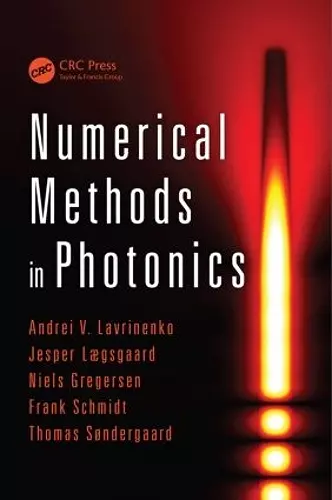Numerical Methods in Photonics
Frank Schmidt author Andrei V Lavrinenko author Jesper Lægsgaard author Niels Gregersen author Thomas Søndergaard author
Format:Hardback
Publisher:Taylor & Francis Inc
Published:17th Sep '14
Currently unavailable, and unfortunately no date known when it will be back
This hardback is available in another edition too:
- Paperback£57.99(9781138074699)

Simulation and modeling using numerical methods is one of the key instruments in any scientific work. In the field of photonics, a wide range of numerical methods are used for studying both fundamental optics and applications such as design, development, and optimization of photonic components. Modeling is key for developing improved photonic devices and reducing development time and cost.
Choosing the appropriate computational method for a photonics modeling problem requires a clear understanding of the pros and cons of the available numerical methods. Numerical Methods in Photonics presents six of the most frequently used methods: FDTD, FDFD, 1+1D nonlinear propagation, modal method, Green’s function, and FEM.
After an introductory chapter outlining the basics of Maxwell’s equations, the book includes self-contained chapters that focus on each of the methods. Each method is accompanied by a review of the mathematical principles in which it is based, along with sample scripts, illustrative examples of characteristic problem solving, and exercises. MATLAB® is used throughout the text.
This book provides a solid basis to practice writing your own codes. The theoretical formulation is complemented by sets of exercises, which allow you to grasp the essence of the modeling tools.
"… useful to students and researchers who want to have a deeper understanding of the methods commonly used in computational electromagnetics. After addressing the basic principles, this book provides the readers with the details and mathematical/numerical framework of commonly used methods including FDTD, finite element, Green’s function, and modal. It then goes on to more advanced topics such as modelling nonlinear materials and materials with gain. This book is a useful addition to the library of any research university."
—C T Chan, Hong Kong University of Science and Technology
ISBN: 9781466563889
Dimensions: unknown
Weight: 860g
364 pages